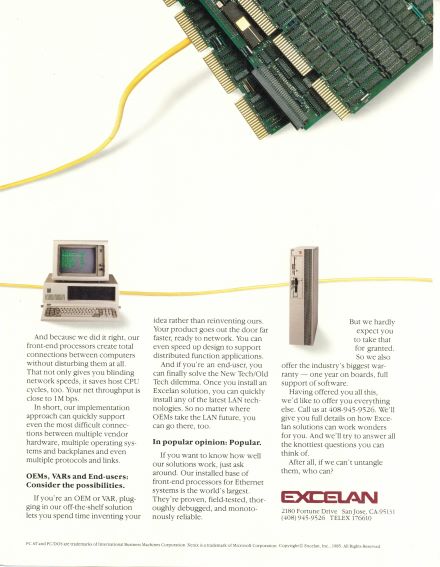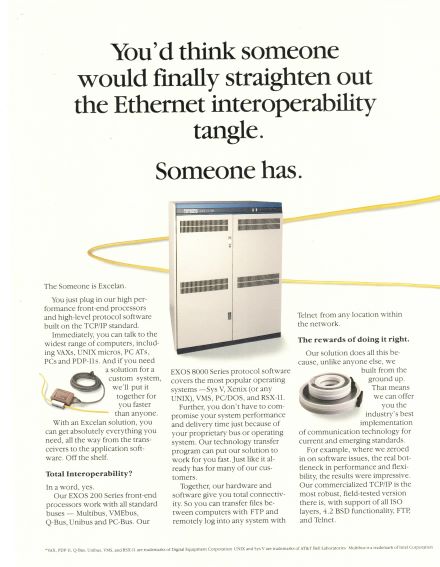I felt very good and confident about things as the 1985 drew to close. Company had established itself as a profitable venture with a very sharp market positioning. We were the go-to company if you needed to network your heterogeneous environment. We had gone from $5. 2 million in revenue and $2.5 million in losses in 1984 to $10.1 million in revenue and $100K in profits in 1985. Additional $5 million of revenue had produced additional gross margin of $2.6 million. We had a high spirited holiday party that year. I expected the growth to continue and profits to in 1986. The board even talked about going public in 1987.
So it came as a big shock when board talked about bringing in a new CEO. This time to dress the company for an IPO. The Wall Street was not used to seeing Indian CEOs back then. We needed a new CEO not because the company had done poorly but because it had done too well. The thought was to consolidate the value by going public. No body wanted to risk a failed IPO. I was asked if I wanted to risk my net-worth just because I wanted to stay the CEO. Board was extremely diplomatic and did not want to risk alienating me. I had done what they thought was impossible. A potential write off for the VC firms had turned into a potential 10X return. I was to be made the chairman of the board.
As expected Excelan kept growing and improved its profitability. We transitioned from the survival mode to growth mode. We loosened the hiring and increased the marketing spend. A virtuous cycle had set in. The board hired C. Richard Moore, the GM of HP’s Calculators division as CEO. HP under David Packard had a tradition of promoting only tall people to senior management positions. David himself was 6′ 8″. At 6′ 5″”, Dick Moore looked the role. He joined us in April of 1986. I stepped back and had all my direct reports, report to Dick. I did attend our staff meetings but let Dick drive them. It was not that long before Dick started to see a slow down coming. In the summer I took a much needed vacation but when I returned the company’s mood was decidedly downbeat. While I was gone, Dick had put in a hiring freeze and cut back on the marketing in anticipation of the slow-down. Sure enough a slow down materialized. I found this very interesting as our incoming leads had slowed to a trickle just as we cut back on the advertising. I told Dick that I saw growth returning and overrode him to increase the marketing spend. Within days the leads started to flow in growth resumed. It was much later a I realized that so called GMs from HP were nothing more than product line managers. Financial control and management was with the corporate. Most of the GM’s had no P&L responsibility. I was very disillusioned by the situation but the company was on its way to going public. I had resumed the reins behind the scene and Dick was fine with that.
Company went public in February of 1987. It was a very successful offering. Excelan had done $22.3 million in revenue and had produced $3.5 million in profit in 1986. I wished we had not slowed down the company on purpose for a couple of months. Right after the IPO We acquired Kinetics, an Apple networking company. Open Macs were selling like hot cakes and we had to have a solution for them. Rest of 1987 continued with growth as usual. Stock Market crash of October 1987 and cut our stock price to below 7 from over 21. Company had gone public at $12/share. In 1987, our revenues topped $39 million and we made $6 million in profit but we were now worth one third the value in the market.
Dick was coasting as I was running the company. It was not that long before a scandal broke involving Dick. We had just gone public and for the Wall Street Dick was still our CEO. Board decided to sell the company rather than fire Dick. NET made an offer to acquire us with no premium over the market price. I went along with it but made it very clear after the deal was signed that I was moving on. NET did not want Dick as a part of the merger so he was let go by the board. After I got to know NET and its management better and before the merger was closed, I told my board that I did not trust NETs books. I felt that they were cooking the numbers. We broke the merger. A few months later, NET scandal broke in public and their stock price dropped by 90%. Our merger was stock for stock and we had been saved from a disaster by a whisker. I became the CEO again and this time I was truly in charge. For the first time, I was not an interim CEO or behind the scene CEO. The company went on to do well. Doing $69 million in revenue and $10 million in profits in 1988.
In spite our tribulations we kept improving our position in the market. TCP/IP had emerged as a winner in the protocol wars. Both Novell and Microsoft became our partners. In the middle of 1989 Novell made an offer to acquire Excelan with a 50% premium over our NASDAQ price. We became a part of Novell in late summer of 1989. I joined the Novell board and was made CTO of Novell.



